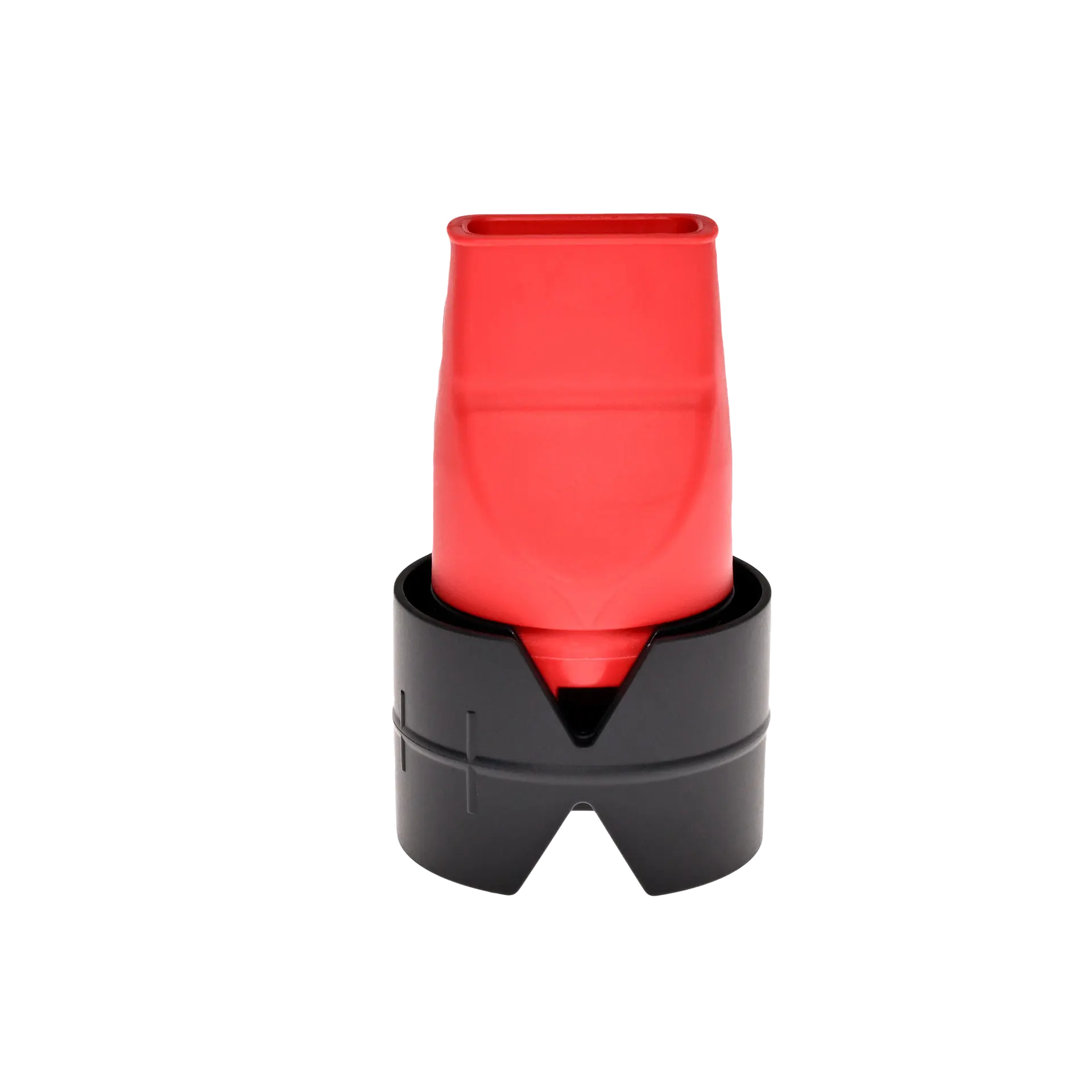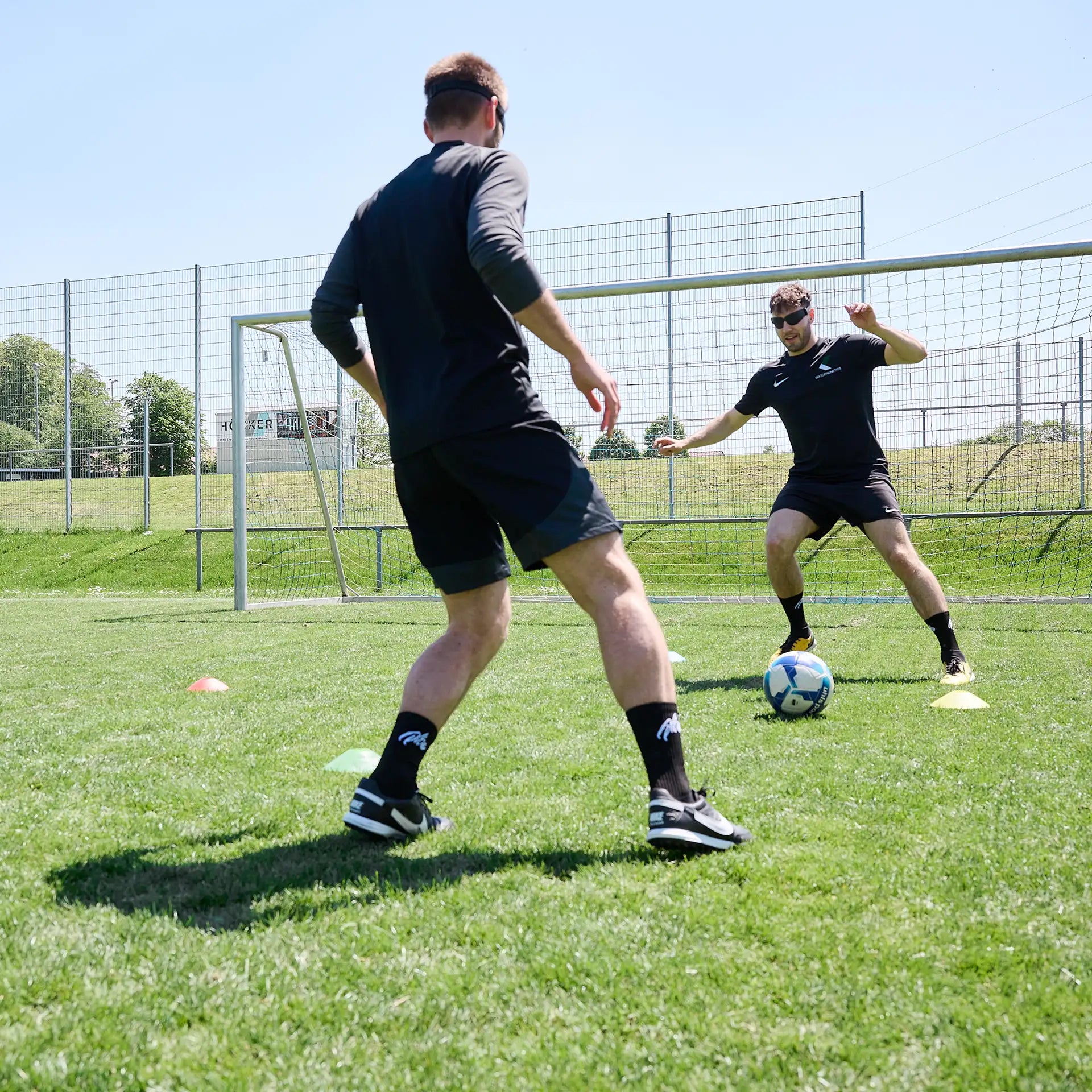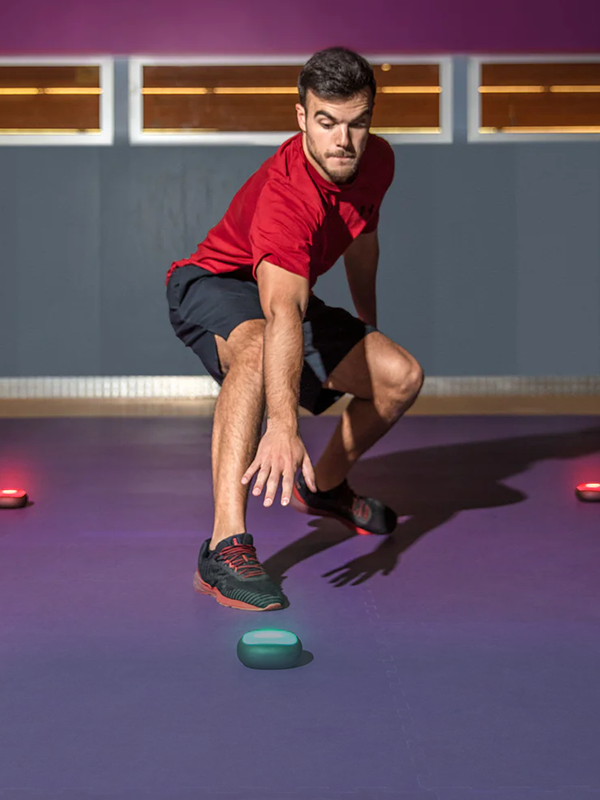Reading time: 5 minutes
The vagus nerve is your internal control center. It ensures calm and relaxation in your body and is therefore largely responsible for your health. In this article, we will show you how you can bring more relaxation and serenity into your life with three simple vagus nerve exercises.
Contents
How important the vagus nerve is for your health
The vagus nerve (Latin: nervus vagus) is one of the most important nerves in your body. It originates directly from the brain stem and connects your brain with many organs . The vagus nerve belongs to the so-called parasympathetic nervous system and plays a crucial role in your well-being.
The parasympathetic nervous system is responsible for relaxation and regeneration in your organism. Its extensive connections and diverse functions make it a key element in the regulation of physiological processes.
Control of hunger and breathing
The vagus nerve is the tenth and longest nerve in the cranial nervous system and is named after it for a reason: "vagus" means "wandering" in Latin. In fact, this cranial nerve runs through large parts of your body and connects the brain with many organs, including the heart, lungs and intestines.
Its main function is to regulate the activity of these organs and to react to stress reactions . The vagus nerve is essential in controlling the automatic and unconscious functions of your organism. These include, for example, your feeling of hunger or your breathing .
Its influence on stress, anxiety and your immune system
The vagus nerve acts as a counterpart to the sympathetic nervous system, the body's activation nerve, which is responsible for the fight or flight response . As part of the parasympathetic nervous system, the "rest nerve", the vagus nerve acts as a calming signal. It ensures a balance between activity and rest in the body. For example, it signals when it is time to switch to rest and digest mode.
When the vagus nerve is active, it slows down the heartbeat, lowers blood pressure and controls activities in the gastrointestinal tract. It is also centrally involved in controlling the inflammatory response in the organism and influences your metabolism and your immune system.
Vagus nerve key factors: From respiratory rate to inflammation
According to neurotrainer Kevin Grafen , the following key functions belong to the vagus nerve:
- slowing of heart rate and modulation of blood pressure
- Reduction of respiratory rate and promotion of deep breathing
- Stimulation of saliva production and support of digestive processes
- Regulation of inflammatory processes through the release of neurotransmitters such as acetylcholine (among other things to combat chronic inflammation)
An active function of the vagus nerve is therefore essential for better mood regulation and achieving a state of relaxation. This is particularly relevant in the treatment of stress conditions, anxiety, pain and certain heart diseases . This is because the vagus nerve not only regulates relaxation reactions, but also the flight response. Regular vagus nerve stimulation is therefore worthwhile.
Influencing emotions and managing stress
The positive effects of vagus nerve stimulation (VNS) and activation are closely linked to relaxation reactions. A well-functioning vagus nerve can help you to better manage stress by ensuring that your body can switch from tension to relaxation mode more quickly. The result: your pulse drops, breathing becomes slower and deeper, blood pressure is lowered and digestion is stimulated .
The vagus nerve also plays a central role in mood regulation . Your emotions and social skills are linked to a healthy vagus nerve, as it promotes the release of feel-good and happiness hormones such as oxytocin. This can even increase your ability to bond and trust other people and help with depression.
3 exercises to activate the vagus nerve
With the following methods and exercises, you can easily stimulate your vagus nerve every day . Experiment with the methods and exercises presented for vagus nerve stimulation and find out which ones are most effective for you. If you do the following exercises regularly, you can bring more relaxation into your life and thus improve your well-being in the long term.
Exercise 1: Triangle Breathing
To activate the vagus nerve, neuroscientist Dirk Schauenberg particularly recommends slow and long inhalations and exhalations . By breathing in and out in a targeted manner, you can stimulate the vagus nerve and thus increase its calming effect on your body.

How it works: In this exercise you will learn the so-called triangle breathing. Imagine this breathing technique as a triangle, where each side of the triangle is given the same unit of time. In practice it looks like this:
- Inhale for 3 seconds (triangle side 1)
- Hold your breath for 3 seconds (page 2)
- Exhale for 3 seconds (page 3)
As you breathe, pay attention to the rise and fall of your abdomen . The consistent pattern has a calming effect and is good if you are very stressed. If necessary, you can increase the number of seconds. Can you manage 6 seconds on each side of the triangle?
Tool tip: To check whether your breathing is regular, you can use a breathing trainer . This produces a sound when you breathe in . If this changes, you know exactly whether you are breathing in too strongly or too weakly.
Frequency: To get the most out of this breathing exercise, you should make time for it regularly . For example, in the morning when you get up or in the evening before you go to bed. To start with, try repeating triangle breathing 3 times . Increase the number as needed until you feel noticeably calmer. Stop the exercise if you feel dizzy.
Dirk Schauenberg explains how triangle breathing works in the video:
You can find more effective breathing exercises and breathing tips here. >
2. Train your respiratory muscles
Have you ever watched yourself breathing? When you breathe in, does your chest or your stomach rise? Abdominal breathing is the more effective of the two because it allows more air and therefore more oxygen to enter the body. It is also the more natural breathing technique of the two because it requires less energy. So if you unconsciously tend to breathe from your chest, try consciously switching to abdominal breathing every now and then.

This is how it works: Stand with your feet shoulder-width apart and bend your knees slightly. Push your pelvis back. Put your hands on your stomach. Now breathe consciously through your stomach . Feel how your abdominal wall rises into your hands. Breathe in until your stomach has expanded completely outwards . Then breathe out forcefully through your mouth. An exercise that can also be combined with meditation.
Tool tip: To be more aware of your breathing , you can put on a breathing belt . This allows you to concentrate precisely on the movements of your abdomen and specifically train your breathing muscles.
Frequency: If you pay attention to breathing through your stomach every now and then, you will unconsciously perform this exercise throughout the day . During strenuous activities such as exercise or heavy lifting, the body automatically activates both breathing movements in parallel.
3. Massages on the neck, jaw and ear pouch

On the neck:
You can also activate the vagus nerve using various massage techniques on the neck. Gently stroking the side of the neck with your fingers can have a relaxing effect.
On the jaw:
Circular finger movements with light pressure on the jaw joint can relieve tension in the neck .
On the ear:
Massage exercises on the ear can also act as vagal stimulation. More specifically, on the so-called auricular pouch. This is the area of skin on the inside of the auricle, below the characteristic cartilage fold.
This is how it works: Put a finger in the ear pocket and make slow, circular movements . This also activates the vagus nerve. You can of course do the exercise on both ears at the same time.
Tool tip: A vibrating pen is ideal for targeting the small ear pocket. Thanks to the vibration of the device, the massage happens automatically. A great and simple alternative to the Tens device with ear clip - without any tangled cables.
Frequency: You can also do these little massages in the morning and evening . In combination with triangle breathing, you have a real little vagus nerve workout that lets you start the day relaxed in the morning and prepares you for a restful sleep in the evening.
All vagus nerve exercises at a glance
You can find all the exercises and other tips in the video. Explained in detail by neurotrainer Yassin Jebrini and physiotherapist Berengar Buschmann :
How social contacts activate your vagus nerve
By the way: Social health can also activate your vagus nerve. Loneliness and social isolation are major stress factors for the body and mind. Regular contact with people who mean something to you can boost your self-confidence and even your immune system .
Therefore: Call a friend and ask how they are. Meet with your family. Plan activities with others. Your vagus nerve and your daily well-being will thank you - for a better quality of life in the long term.
Conclusion
Activating the vagus nerve promotes the body's self-healing powers. A better understanding of the functions of the vagus nerve can help you to promote relaxation and stress reduction more consciously. With the right exercises, you can activate your vagus nerve every day and help yourself to start the day relaxed in the morning and fall asleep better in the evening. Be willing to experiment and find out for yourself how the breathing exercises have the greatest effect for you.
literature
Wilson-Pauwels, L. et al. (2010). Cranial nerves: Function and dysfunction (3rd ed.). Shelton, Conn.: People's Medical Pub. House.
Kaniusas, E., Samoudi, AM, Kampusch, S., Bald, K., Tanghe, E., Martens, L., ... & Szeles, JC (2019). Current Directions in the Auricular Vagus Nerve Stimulation I – A Physiological Perspective. Frontiers in Neuroscience, 13, 854. https://doi.org/10.3389/fnins.2019.00854

















